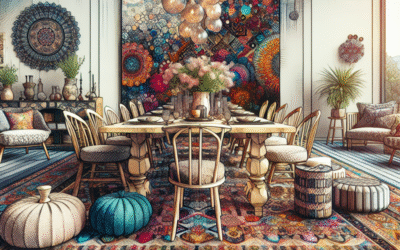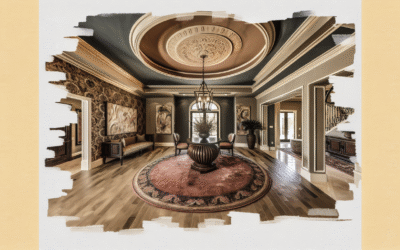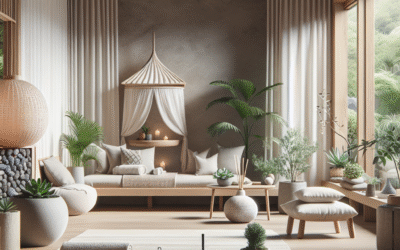
When it comes to home décor, people often focus on walls, furniture, and accessories. But what about the ceiling? That’s right! Ceilings can be a blank canvas waiting for that perfect touch. Whether you’re going for elegance, rustic charm, or modern chic, adding texture to your ceiling can dramatically change how a room feels. The right ceiling texture can introduce visual depth and create an inviting atmosphere that’s often overlooked.
Why Ceiling Textures Matter
So, why should you even think about ceiling textures? Well, think about it this way: your ceiling can either feel like an afterthought or a statement piece. The right texture can enhance a room’s character, create optical illusions for height or space, and even absorb sound (yes, that’s a thing!).
Exploring Different Ceiling Textures
You’ve probably encountered a few types of ceiling textures in homes or commercial spaces, but let’s break down the most popular ones and what makes each of them special.
1. Smooth Ceilings
Smooth ceilings are the classic choice. They bring a sense of understated elegance. Think about those pristine white ceilings in art galleries—clean, simple, and sophisticated. Smooth ceilings work especially well in modern homes where minimalist aesthetics reign. They also make rooms feel larger and brighter, allowing light to bounce around. Perfect for smaller spaces!
2. Knockdown Texture
This is your go-to if you want a bit of flair without going overboard. Knockdown texture gives a rustic yet chic vibe. Typically applied with a spray, it creates a flat, splatter-like look that’s both visually interesting and soft on the eyes. You know what? It’s great for hiding imperfections, too! If you’ve got a ceiling that’s had its fair share of bumps and scrapes, knockdown can be a perfect cover-up.
3. Popcorn Texture
Ah, the infamous popcorn ceiling. While some people find it charming, others associate it with older homes. It’s got a unique, fluffy appearance that’s quite nostalgic. But let’s be real—this texture can trap dust and be a challenge to clean. If you love the aesthetic but want an upgrade, consider a modern variation that mimics the look without the hassle.
4. Coffered Ceilings
If you’re aiming for grandeur, coffered ceilings are the way to go. These ceilings feature a grid pattern created by beams, giving them an impressive architectural detail. They work well in formal dining rooms or grand entryways, adding both drama and elegance. Imagine hosting a dinner party under a beautifully coffered ceiling—talk about a conversation starter!
5. Beamed Ceilings
Beamed ceilings add a touch of rustic warmth to any space. Whether they’re raw wood or painted in modern colors, beams can lend an intimate, cozy feel to living spaces. They work especially well in country-style homes or open-concept designs, bringing both character and functional separation to larger areas.
Choosing the Right Texture for Your Space
Deciding on the perfect texture isn’t just about aesthetics; it’s also about the vibe you want to create. Here are a few considerations to help guide your choice:
- Room Purpose: What’s the room’s main function? Relaxation areas may benefit from softer textures, while studios might thrive with smoother surfaces.
- Height of Ceiling: Textured ceilings can visually lower or raise the ceiling height. Lighter textures can make a space feel taller, while darker ones may bring it closer.
- Style Consistency: Ensure the texture aligns with the overall décor style of your home. What works in a modern loft may clash in a traditional setting!
How to Apply Texture Yourself
Feeling adventurous? If you want to add some texture to your ceiling, here’s a quick DIY guide to get you started:
- Prepare the Space: Remove furniture and cover the floor to catch any falling debris.
- Gather Materials: You’ll need a spray texture gun, a ladder, and protective gear.
- Practice First: Try your technique on a piece of cardboard before hitting the ceiling.
- Apply Evenly: When you’re ready, apply the texture evenly. Enjoy the process!
Maintaining Textured Ceilings
Let’s be honest—no one wants a ceiling that looks dingy and neglected. Depending on the texture you’ve chosen, maintenance activities can vary. Here are some quick tips:
- Regular Dusting: A gentle duster can help keep things looking fresh.
- Spot Cleaning: For stains, a damp cloth usually does the trick. Just be cautious around delicate textures!
- Professional Cleaning: If you’ve got a popcorn ceiling, you might want to call in the pros for deep cleaning.
Planning for Lighting
Don’t forget about lighting! The way you illuminate your ceiling—thanks to the texture—can vastly change the room’s mood. Warm, soft lighting can create a cozy ambiance, while recessed lights can highlight architectural features. Just imagine how different your room can feel based on your lighting choice. It’s like magic!
Trends to Watch
Ceiling textures aren’t just frozen in time; they evolve like the seasons. Currently, we’re seeing a resurgence of natural materials such as wood, paired with organic textures to promote a calming atmosphere. There’s also an uptick in paintings and murals on ceilings—bold, beautiful, and daring!
So, what’s next? Keep an eye on sustainable materials. Eco-friendly options are becoming more popular, as homeowners want to create spaces that aren’t just beautiful but also mindful of the planet.
Final Thoughts
When you take time to consider your ceiling, you open up a world of possibilities. The textures not only influence the aesthetics but also the overall feel of the space. Whether you choose a sleek, smooth finish or go for something more rustic and inviting, ceilings should tell your unique story. So, as you think about your home, don’t overlook the importance of this often-neglected canvas. You might just find that the right texture changes everything!
FAQ
DISCLAIMER
This article is intended for informational purposes only. Always consider consulting a professional for specific advice tailored to your needs when it comes to home renovations.
Categories
- Accent Walls & Ceilings (61)
- Art Curation & Gallery (62)
- Bedding Style Trends (68)
- Bedroom Makeover (81)
- Bohemian & Eclectic Styles (58)
- DIY & Budget-Friendly Decor (64)
- Eco-Friendly Design (62)
- Furniture Care (71)
- Home Decor & Design Ideas (162)
- Home Wellness Spaces (59)
- Integrated Outdoor Living (67)
- Japandi Style (61)
- Kids and Nursery Decor (59)
- Living Room Decor (79)
- Mix & Match Techniques (73)
- Modern & Contemporary Design (66)
- Rug Sizing & Placement (73)
- Scandinavian Design Inspiration (20)
- Seasonal Home Decor (79)
- Small Space Solutions (73)
- Wall Art & Painting Tips (77)
Recent Comments
Archives
Product Gallery
-
Large Area Green Rugs for Bedroom Nordic Living Room Decoration Shaped Carpet Irregular Plush Lounge Rug Home Thick Washable Mat
Rated 5.00 out of 5$36.00 – $225.00Price range: $36.00 through $225.00 -
Nordic Style Rugs for Bedroom Morandi Living Room Decoration Carpet Large Area Geometry Lounge Rug Home Cloakroom Non-slip Mat
Rated 5.00 out of 5$26.00 – $388.00Price range: $26.00 through $388.00 -
Irregular Shapes Living Room Decoration Carpet Modern Style Rugs for Bedroom Home Thicken Plush Rug Fluffy Soft Lounge Floor Mat
Rated 4.83 out of 5$37.00 – $226.00Price range: $37.00 through $226.00














